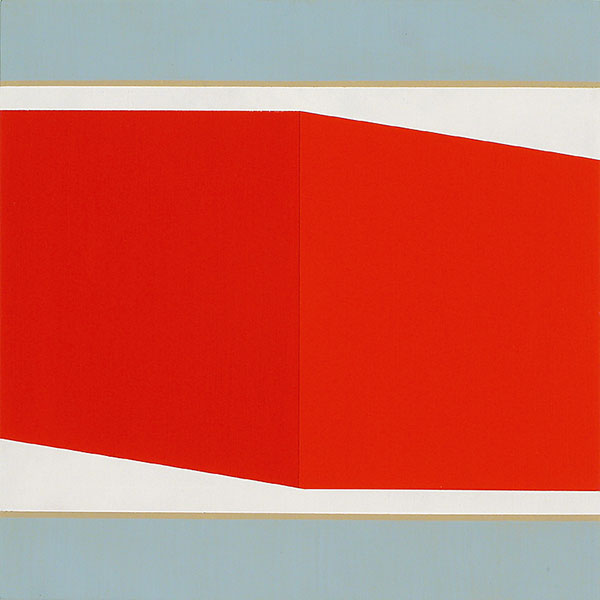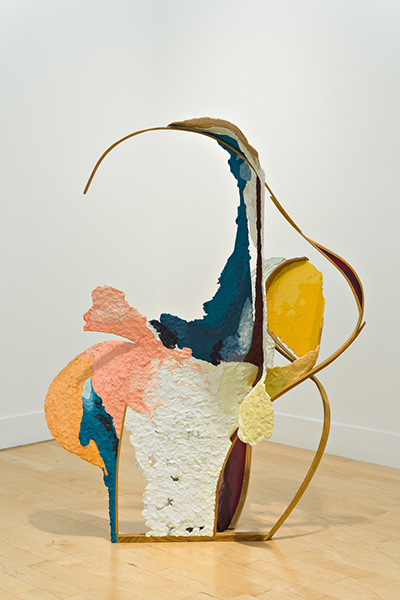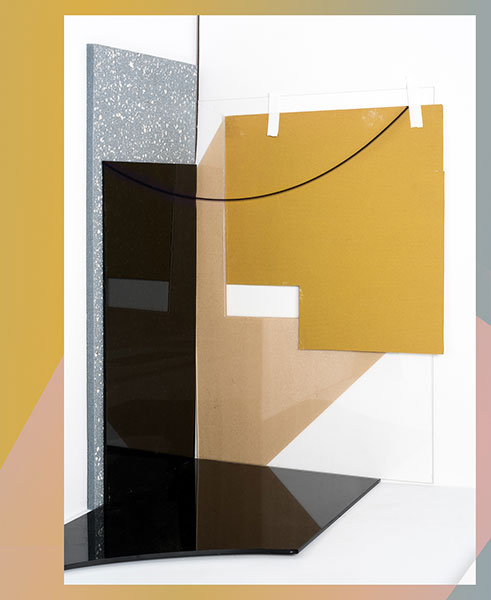
August 12, 2016
‘Boundary Issues’ @ Gregory Lind
by David M. Roth
It’s that time of year, folks. The time when galleries — to spin it positively – mount group exhibitions that showcase entire stables or select portions thereof. It’s also the time when critics tend to yawn, put up their feet and wait for the onset of fall. Greg Lind, a gallerist with a keen eye for eccentric genius, has mounted one such show — a show that, instead of driving you to deeper into your hammock, commands you to instead lace up your walking shoes and head for 49 Geary St. where an exhibition called Boundary Issues runs through August 27.
The title attaches easily to the 10 artists on view. Their works fall between the cracks of established categories, stretching received notions about what painting, photography and sculpture should be.
None in this show stretch the boundaries further than Brooklyn-based Christian Maychack. Of his most recent solo show in this space two years ago I wrote: “Confusing surface and support, freedom and containment, Maychack’s pigment-infused epoxy clay sculptures bounce our attention between the elasticity of the media and their wood “support” structures. Do the “frames” support the clay or is it the other way around? Maychack, by simultaneously invoking and discarding old modernist ideas about how painting and sculpture ought to behave” reframes the question. Literally. “Like the shaped canvases of Frank Stella and Elizabeth Murray, his work, at a vastly smaller scale, challenges assumptions, encouraging close examination of their nooks and crannies where the marvelous details of their creation are best savored.”
Compound Flat # 47, his sole offering, is, essentially, a group of torn, rough-textured monochromatic “paintings” surrounded by see-through spaces, outlined by curved wood slats that serve as both sculptural elements and supports. It’s as good as anything Maychack’s recently made, and given what he’s made, that’s saying a lot. For some perspective on the fascinating journey this artist’s taken, I direct you to David Buuck’s review of a 2011 show, Uncertain Spaces, in which Maychack made sculpture out of wicker baskets stuffed with pigmented epoxy resin.
Don Voisine (pictured above) is another of the gallery’s stars. Again, borrowing from myself: “Had he been working in the ‘60s, Voisine might have found himself included in the exhibition called “Post-Painterly Abstraction.” Clement Greenberg curated the show and coined the term to describe a group of mostly hard-edge abstractionists who he hoped would smash illusionism by crushing forms and volumes into the two-dimensional space of the picture plane. Out that event came Frank Stella’s famous “What you see is what you see” dictum. Voisine, while appearing to follow it, cannily subverts it. Each of his taut geometric abstractions, however compressed or skewed, seems to be about elasticity and the opening up of concealed space.” What they do most forcefully is evoke The Void. Conjoined, the painting at hand, does this with a pair of bright red parallelograms fused at the center, exhibiting a sensibility that Voisine at the head of a long line of geometric abstractionists stretching from Malevich to McLaughlin.
Tom Burckhardt, another New Yorker, pursues retinal values with abundant humor and spatial inventiveness. Here’s what I wrote about him in May: “Gawky, totemic, retina-tingling and multi-layered, Burckhardt’s paintings don’t just split the difference between representation and abstraction; they render such distinctions null and void… indicating a synthesis of many things: the tribal-influenced abstract painting of Steve Wheeler (1912-92), the comic figuration of Philip Guston and the Surrealism of the Hairy Who painters, Jim Nutt and Karl Wirsum. One can also detect traces of Carol Dunham and even stronger hints of the Brazilian landscape architect/painter, Roberto Burle-Marx (1909-94), whose innovations in tropical design are on view (through September 18) in a career retrospective at the Jewish Museum in New York. Burckhardt, without appearing derivative, works these influences into collisions that suggest body parts and landscapes. While we’re conditioned to think that painting should be one thing or the other, representational or abstract, Burckhardt refuses to submit to any singular approach or orthodoxy. Instead, he operates from the position that doubt and ambiguity are central to his working process.”
Phillip Maisel, one the gallery’s younger artists, is making serious headway exploring interior architecture. He uses the camera, along with collage techniques involving mirrors, to produce illusions that reconfigure physical space along complex, Constructivist-influenced lines. Elwyn Palmerton, writing in these “pages” last year, observed: “We engage with his work by mentally translating the fragmented pieces back into what they once were, retracing the process by which they were composed in the studio.” In this regard Maisel is not alone; his work evinces traits similar to those of other emerging artists like Yamini Nayar and Hiroshi Takizawa.
The show also includes works by Zach Bruder, Thomas Campbell, Jim Gaylord, Jake Longstreth, Cary Smith and Will Yackulic (whose work appeared in BAMPFA’s inaugural exhibition, Architecture of Life). Each deserves serious attention. However, in the interests of time, which is running short, I’m cutting this discussion, cribbed from earlier reviews, short.
But before I do I'm raising an issue: Where are the women? The gallery represents six, all of them first-rate artists, so why aren’t some of their works in the show? If we're talking boundary issues, and not just about formal qualities, this one looms large. For an in-depth discussion of gender inequality in the art world check out George Melrod’s illuminating report (The Gender Gap) in the May/June issue of art ltd.)
'Nuff said. Don’t let the all-male cast stop you from seeing this otherwise excellent show.




